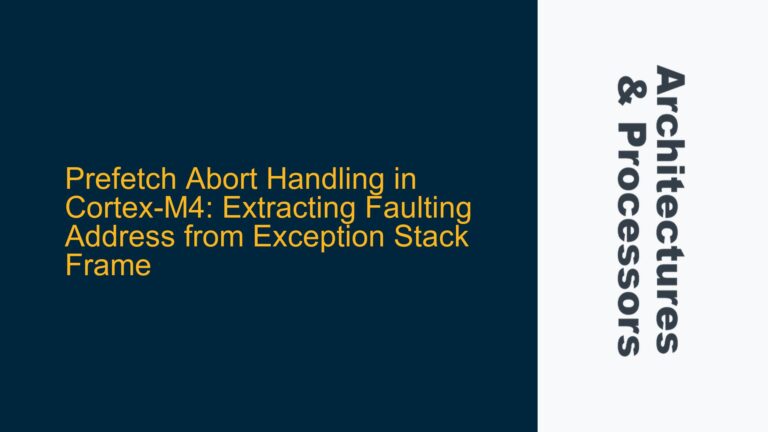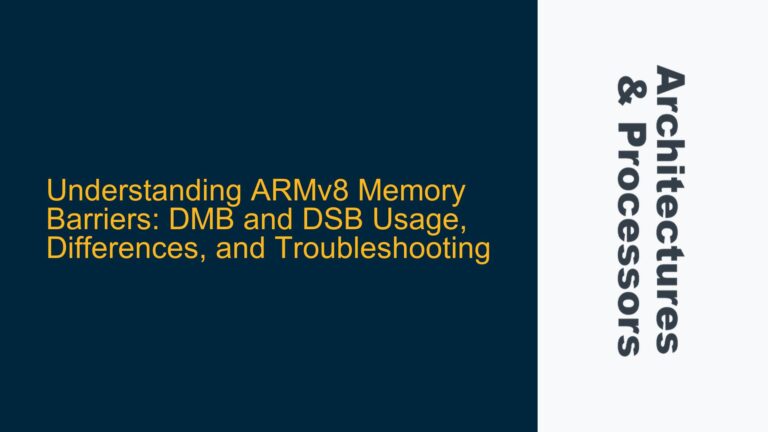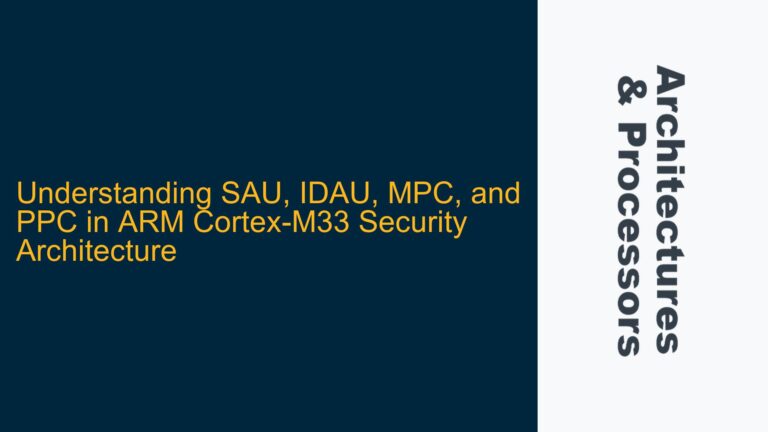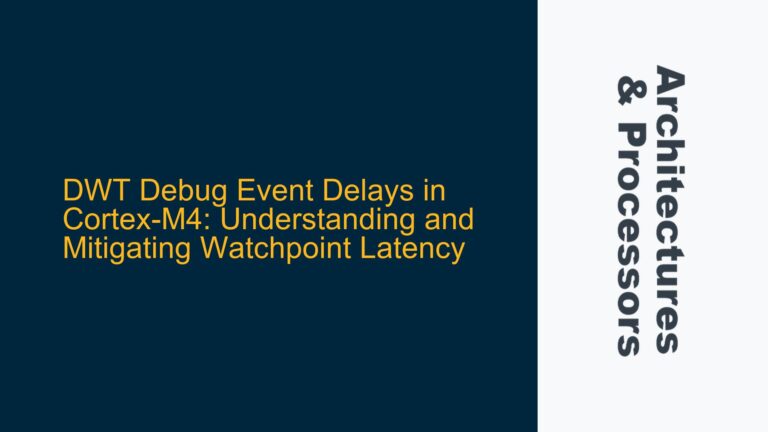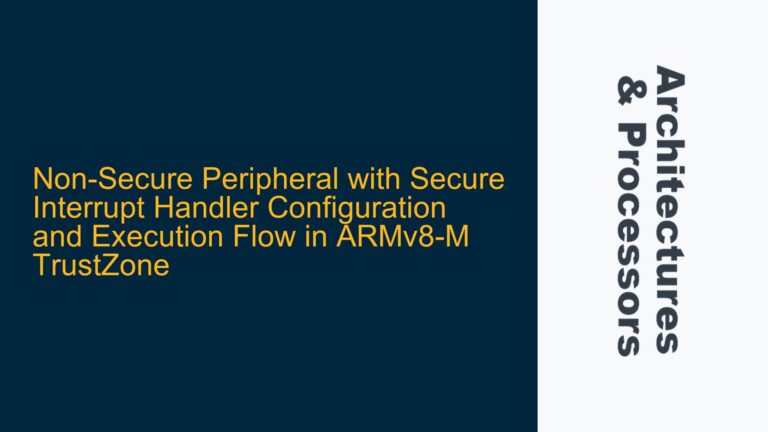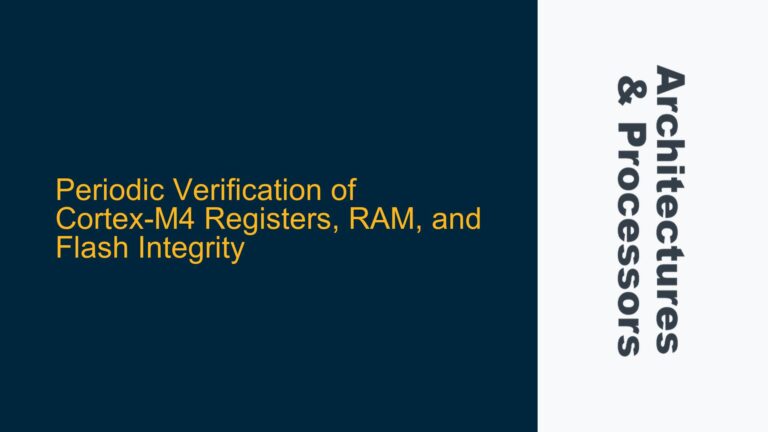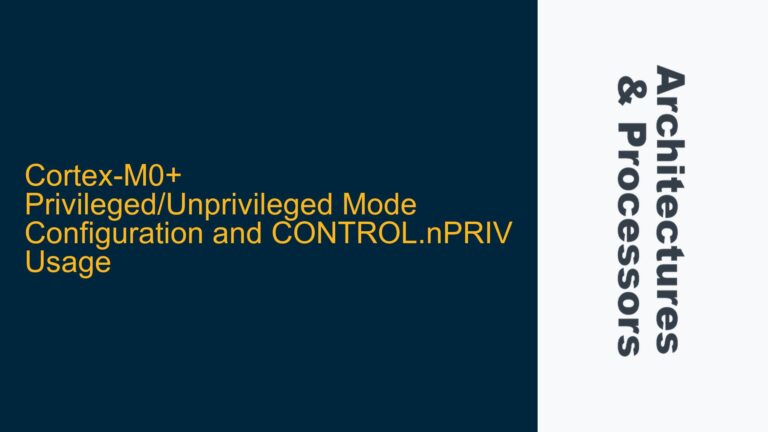Extra Cycle in Cortex-M4 DWT Cycle Count Measurement Due to Pipeline Effects and Memory Access
Cortex-M4 Pipeline Behavior and DWT Cycle Counter Measurement Anomaly The Cortex-M4 processor, like many modern microprocessors, employs a pipelined architecture to enhance performance. This architecture allows multiple instructions to be processed simultaneously, albeit at different stages of execution. While this design significantly boosts throughput, it introduces complexities when measuring precise instruction cycle counts, especially when…

